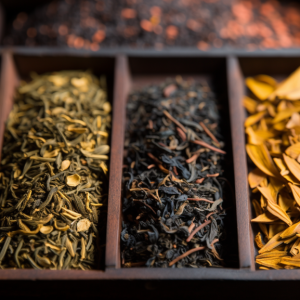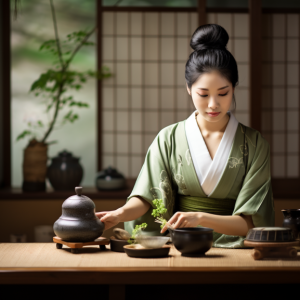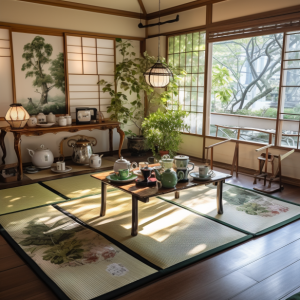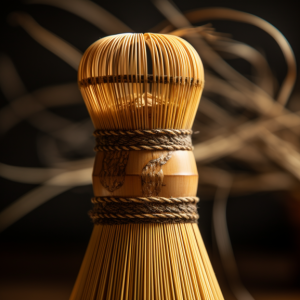The Japanese tea ceremony, known as “sado” or “chado,” is a time-honored tradition that embodies grace, mindfulness, and hospitality. While it may seem unrelated to sushi at first glance, the art of tea ceremony actually complements the sushi dining experience in profound ways. In this article, we delve into the captivating world of Japanese tea ceremony and explore how its principles and rituals enhance the enjoyment of sushi.

The philosophy behind Japanese Tea Ceremony
The Japanese tea ceremony is deeply rooted in the principles of harmony, respect, purity, and tranquility. These principles, known as “wa, kei, sei, jaku,” guide the entire tea ceremony experience. Just as sushi embodies a balance of flavors and textures, the philosophy of tea ceremony aligns with the essence of sushi dining. To learn more about the philosophy behind Japanese tea ceremony, you can explore this article: “The Philosophy of Japanese Tea Ceremony”

Rituals
The rituals of Japanese Tea Ceremony Japanese tea ceremony is a meticulously choreographed performance that involves precise steps, graceful movements, and meaningful gestures. From the preparation of matcha tea to the way it is served and enjoyed, each action has symbolic significance. Just like the careful preparation and presentation of sushi, the rituals of the tea ceremony enhance the sensory experience for the guests. To gain a deeper understanding of the rituals involved in Japanese tea ceremony, you can refer to this resource: “The Art of the Japanese Tea Ceremony”

Tea and Sushi Pairings
The art of pairing tea with sushi can create delightful flavor combinations and enhance the overall dining experience. Different types of tea, such as sencha, gyokuro, or hojicha, complement various sushi flavors and textures. For example, the grassy notes of sencha may pair well with light and delicate sashimi, while the roasted aroma of hojicha can enhance the richness of fatty fish. To explore tea and sushi pairing recommendations, you can refer to this guide: “Tea and Sushi Pairing: Elevating Your Culinary Experience”

The Aesthetics of Tea Utensils
Japanese tea utensils are exquisite works of art that play an integral role in the tea ceremony. Each utensil, from the tea bowl (chawan) to the tea scoop (chashaku) and tea whisk (chasen), is carefully crafted and selected for its beauty and functionality. The aesthetic qualities of tea utensils harmonize with the elegance of sushi tableware, creating a visually appealing dining experience. To explore the beauty of Japanese tea utensils, you can refer to this article: “Japanese Tea Utensils: Tradition and Beauty”

Mindfulness
Mindfulness and Present-Moment Awareness Japanese tea ceremony encourages mindfulness and being fully present in the moment. The deliberate and serene pace of the tea ceremony allows participants to focus on the sensory experience and appreciate the beauty of simplicity. This mindfulness aligns with the mindful enjoyment of sushi, where each bite is savored and appreciated. To explore the connection between mindfulness and tea ceremony, you can refer to this resource: “Tea Ceremony and Mindfulness”
Conclusion
The art of Japanese tea ceremony brings a unique dimension to the world of sushi. By embracing its principles of harmony, mindfulness, and aesthetics, sushi enthusiasts can elevate their dining experience to a new level of appreciation. Whether through tea and sushi pairings or by exploring the rituals and philosophies of the tea ceremony, the connection between these cherished traditions becomes a source of delight for the senses and nourishment for the soul.

Rate this recipe
1 People Rated This Recipe
Average Rating
No comments yet.